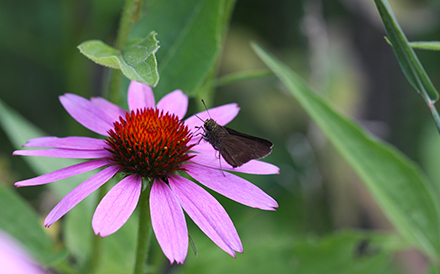
SCIENTIFIC NAME
Echinacea angustifolia
DESCRIPTION
Herbaceous perennial that can grow to 70 centimetres. Large pink flowers bloom atop hairy stems for several weeks in the summer. It has long narrow leaves, mainly at the base of the plant, that are covered in fine hairs.
RANGE
This species of Echinacea is native to Manitoba and Saskatchewan.
HABITAT
Narrow-leaved Purple Coneflower can be found in prairies, meadows and woodland edges. It grows well in full sun but will handle a bit of shade.
DIET
BEHAVIOUR
undefinedPRIMARY ECOSYSTEM ROLES
Wildlife Uses:
Echinacea flowers are a good food source for pollinators like flower flies, bees and butterflies. If you let them go to seed, they will remain on the stalk providing food in the winter for birds like juncos, finches and chickadees.
Human Uses:
Indigenous Peoples have used the roots of Echinacea to heal many conditions, like boosting the immune system and warding off colds and flu. It is now a widespread product commonly found in stores for this purpose.






